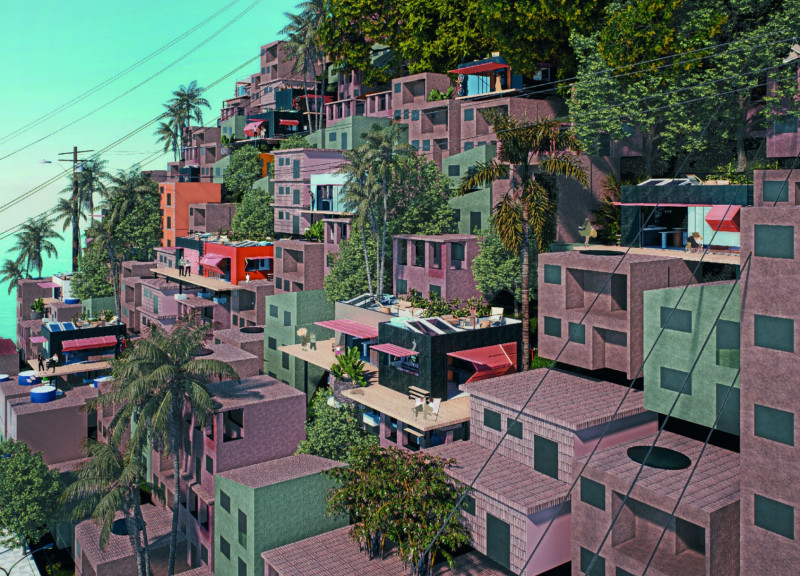5 key facts about this project
The building's massing is carefully articulated, featuring a blend of varied heights and asymmetrical shapes that create a visually interesting silhouette against the skyline. The larger volumes house communal activity areas, while the more intimate spaces cater to individual users' needs. This thoughtful configuration not only maximizes the spatial efficiency but also encourages social connections among users, fostering a sense of community.
An essential aspect of this architectural design is its emphasis on transparency and light. Large expanses of glass are strategically placed throughout the façade, allowing natural light to flood the interior spaces. This design choice not only enhances the aesthetic appeal but also contributes to energy efficiency by reducing the reliance on artificial lighting. The transparency engages the exterior with the interior, creating a visual connection between the inhabitants and the surrounding environment, which promotes an interaction that is often sought in contemporary architecture.
Materials chosen for this project play a pivotal role in its overall identity. The use of concrete as the primary structural material provides both durability and a modern, urban texture. In contrast, the incorporation of warm wood finishes in interior spaces adds a touch of warmth and approachability, ensuring that the environment feels inviting to its users. Steel beams and frames further contribute to the structural integrity while enabling the large openings that define the building's presence. This careful selection of materials demonstrates a commitment to quality, sustainability, and a harmonious integration with the surroundings.
The project's design approach also embraces sustainable methodologies. The incorporation of green roofs not only enhances the insulation properties of the building but also contributes to biodiversity in the urban context. Rainwater collection systems further support the sustainable agenda, demonstrating a proactive stance towards environmental stewardship. These elements illustrate how the architecture aligns with contemporary values around sustainability, appealing to both users and the broader community alike.
Uniquely, this design reflects a keen understanding of its cultural and social context. The project includes spaces specifically designated for community gatherings and events, reinforcing the builder's intention to serve as a civic asset. This aspect has been clearly recognized and appreciated by local users, elevating the building to a focal point in the neighborhood.
The integration of artistic elements into the architecture adds another layer of depth to the project. Murals and installations by local artists adorn the interior and exterior, creating an environment that celebrates local culture and heritage. This thoughtful engagement with the community not only enlivens the space but also makes a statement about the role of architecture in cultural expression.
For those interested in a deeper exploration of this architectural project, reviewing the architectural plans, sections, and designs will provide further insights into how the elements come together. The architectural ideas presented are reflective of a careful balance between practical function and aesthetic integrity, underscoring the project’s relevance in contemporary discourse. Engaging with the broader presentation allows for a fuller understanding of how this design operates within its context while fulfilling its purpose.


























